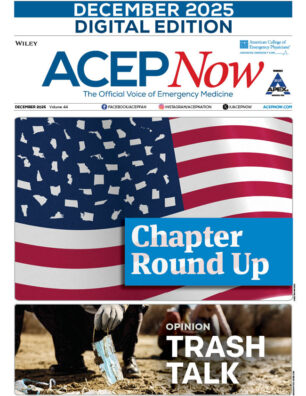
Answer: The correct answer is retropharyngeal abscess (d).
Explore This Issue
ACEP Now: Vol 42 – No 09 – September 2023A retropharyngeal abscess (RPA) is an uncommon but serious life-threatening infection that results from a purulent infection in the retropharyngeal space. It may be seen in all ages but most commonly occurs in children aged two to five years. A retropharyngeal abscess usually occurs after an antecedent viral upper respiratory illness that results in a suppurative cervical adenitis that then extends to involve the retropharyngeal space.
RPA may also result from trauma or extension of tonsillar or dental infections. Infections are generally polymicrobial with organisms that include Streptococcal pyogenes, Staphylococcus aureus, Haemophilus influenzae, Pseudomonas spp, and Fusobacterium spp, as well as other oral anaerobic organisms. Symptoms include fever, neck pain, nuchal rigidity, pharyngitis, and cervical adenopathy. Other symptoms include dysphagia, drooling, and trismus. Patients often refuse to extend their necks due to pain and a neck mass. Torticollis or a muffled voice may be observed. The abscess can compress the airway, resulting in stridor and respiratory distress.
Untreated RPA may progress to mediastinitis with a mortality rate that approaches 25 percent. Other serious sequalae include pericarditis, internal jugular thrombosis, and epidural abscess.
(See the original question here.)
Member Benefit: All ACEP members receive a 20 percent discount on VisualDX.
Reference
- VisualDx.com. Available at: https://www.visualdx.com/visualdx/diagnosis/retropharyngeal+abscess?diagnosisId=55716&moduleId=102





One Response to “VisualDX Answer: d) Retropharyneral Abscess”
October 30, 2023
Terry Mitchell, MDWhere is C-7? Where is proximal T-1? Is there a reason that most ER docs I work with are now ordering CT scans over plain films? Terry Mitchell, MD